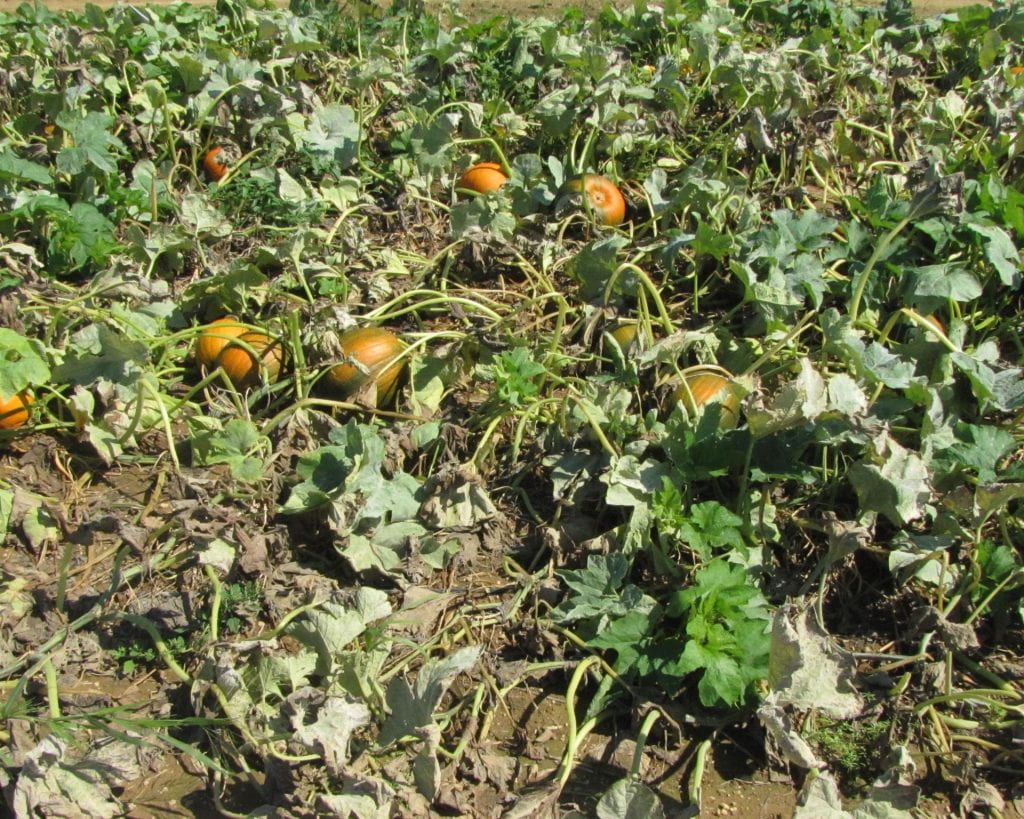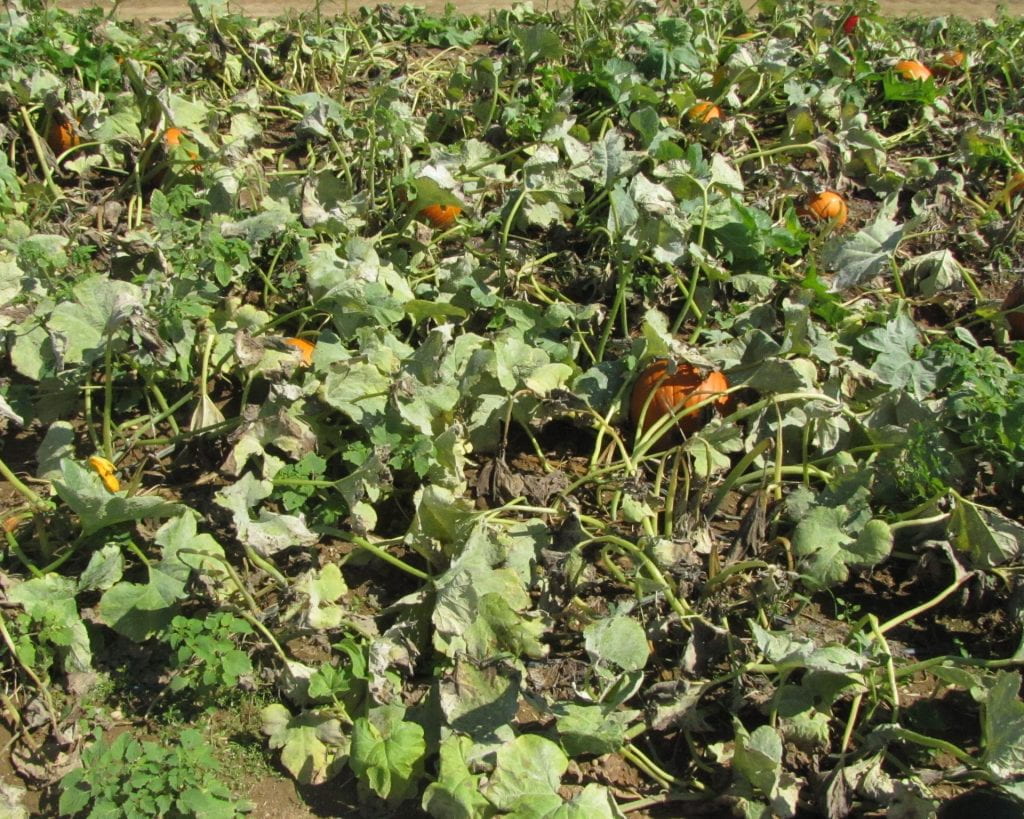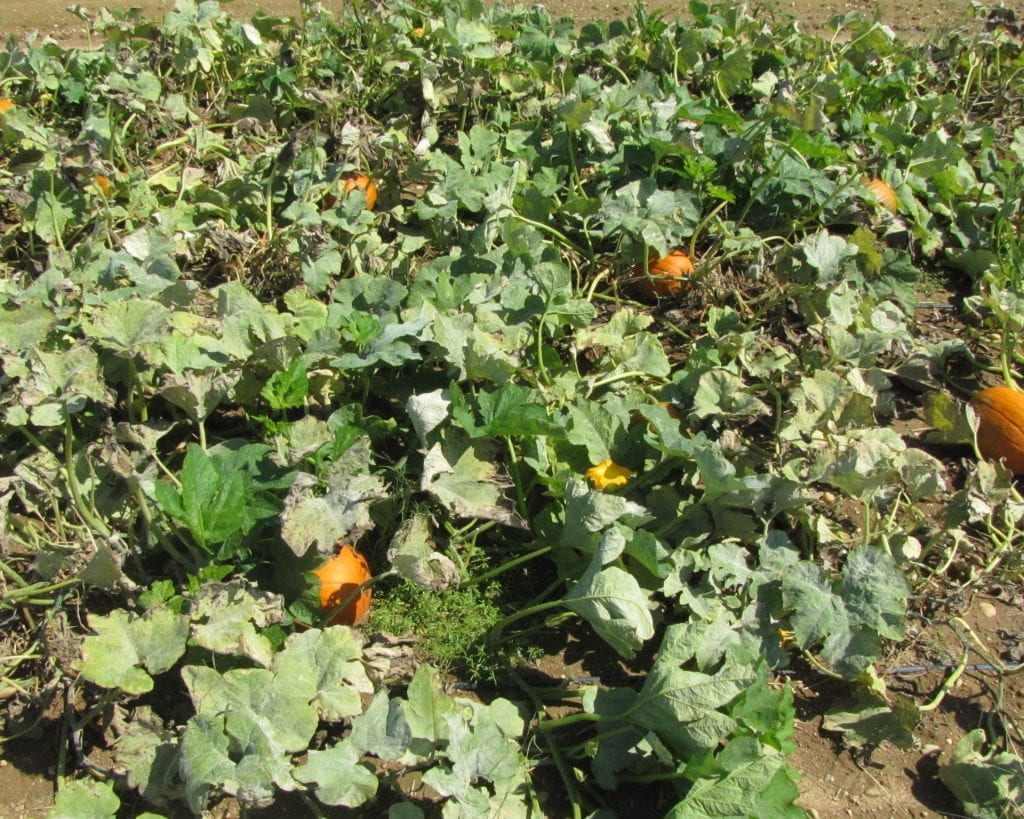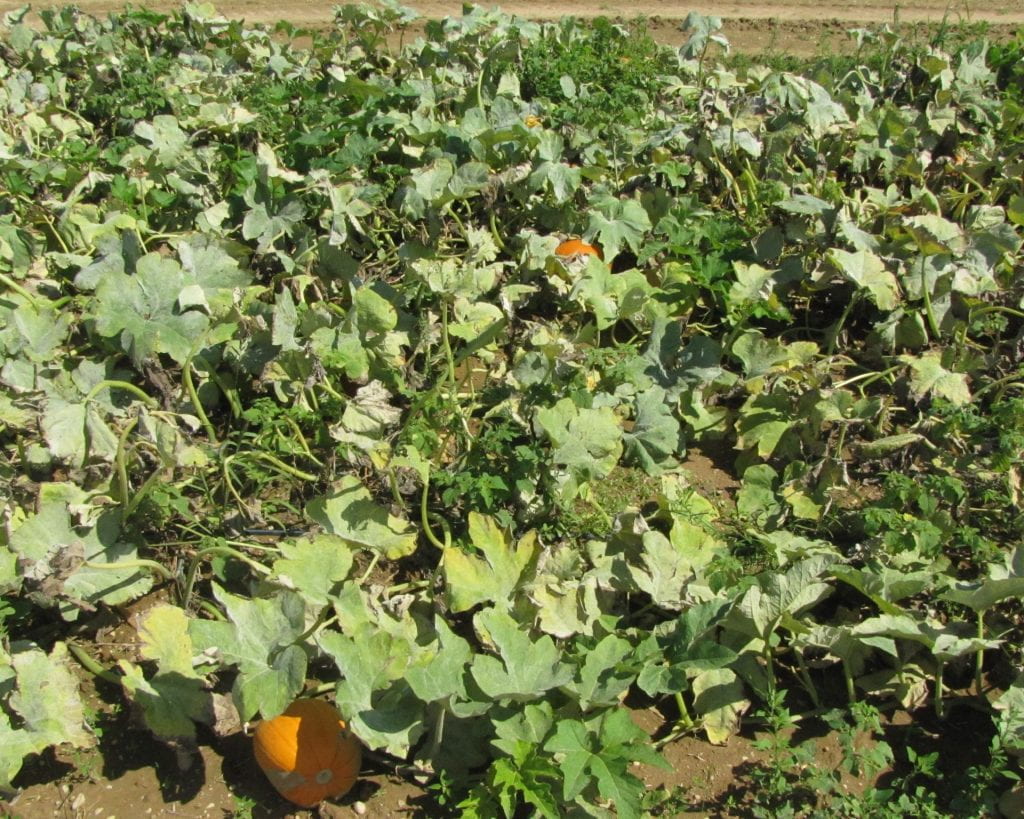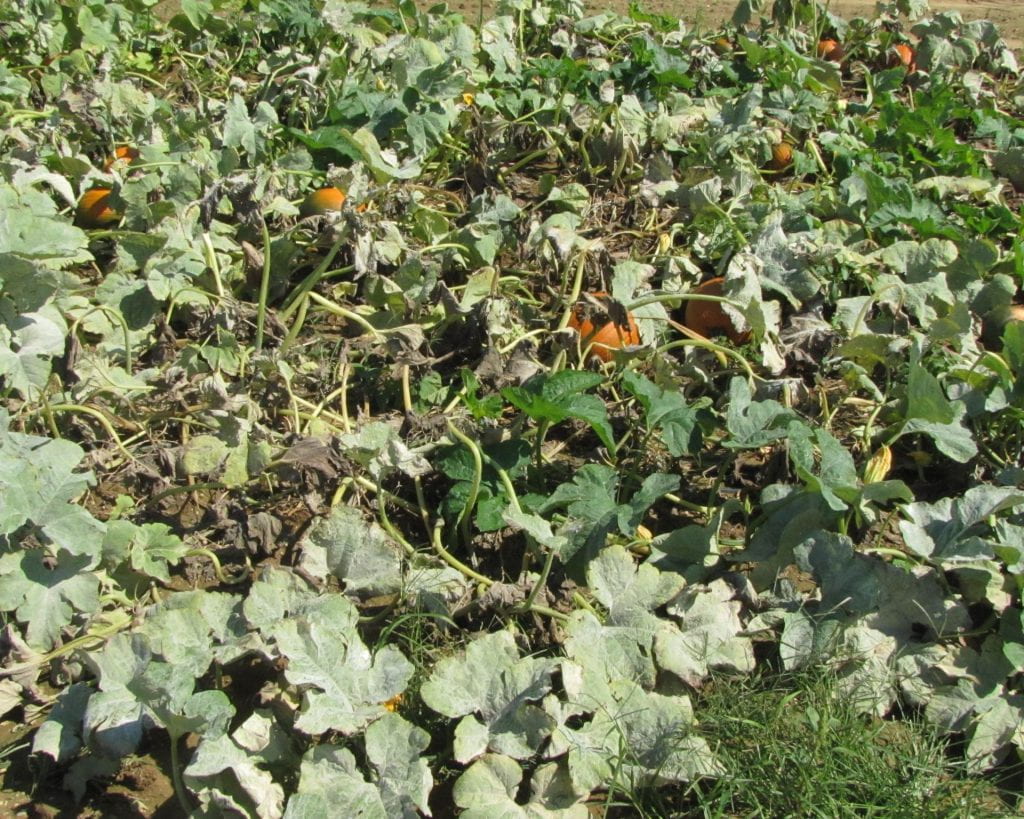The experiment was conducted with ‘Gold Challenger’, a powdery mildew susceptible pumpkin variety.
Biopesticides tested:
- Howler 5 lb/A
- Theia 3 lb/A
- Howler 5 lb/A + Theia 3 lb/A
- MBI-121 2 qt/A (=Regalia + Stargus)
- Tril-21 1% (Trillium)
- Aviv 30 fl oz/100 gal
- Aviv 30 fl oz/100 gal + Timorex ACT 35 fl oz/A
Compared to an organic non-biopesticide product:
- Kocide 3000-O 1.25 lb/A
Powdery mildew was first observed in this experiment on 26 July in one of the 36 plots on only one of the 720 leaves examined (0.14%). Biopesticide treatment applications started one day later. The IPM action threshold recommended to growers for initiating fungicide applications is 1 out of 50 old leaves with symptoms (2%). Therefore, the first application in this experiment is considered a preventive application because it is before symptoms would be found through routine scouting. On 2 August symptoms were found in 27 of the 36 plots on 50 of 540 leaves examined (9%). The fifth application scheduled for 24 August was delayed by two days because of extensive rainfall (2.6 in.) with Hurricane Henri on 22 and 23 August. The last application was applied early due to rain forecast with remnants of Hurricane Ida starting late on 1 September (3.3 in. total). It is possible efficacy of treatments was affected by the impact of these storms on application timing, product residues, and/or disease development. Severity was low throughout August especially on upper leaf surfaces, which may be partly due to some contact activity for powdery mildew of the pesticides applied for P. capsici and insect pests. On 30 August, one day before the sixth and last application, severity in the untreated control plots averaged 0.3% on upper leaf surfaces and 33% on lower surfaces. Severity increased substantially over the first week in September.
All seven biopesticide treatments suppressed powdery mildew on upper leaf surfaces. Most provided 51 to 60% control based on comparing their AUDPC values (summation of powdery mildew severity over the assessment period: 26 July – 8 September) to the AUDPC values of the untreated control plots. Kocide 3000-O, the organic copper treatment included for comparison with the biopesticides, was the most effective treatment, providing 77% control based on 8 Sep severity and AUDPC values. It was only treatment significantly better than Aviv + Timorex Act which provided 38% control. No treatment controlled powdery mildew on lower leaf surfaces, documenting these products have contact activity and are not able to move to the underside of leaves. Consequently, no treatment significantly reduced defoliation due to powdery mildew or improved fruit quality (percent of fruit with good handles) compared to the untreated control.
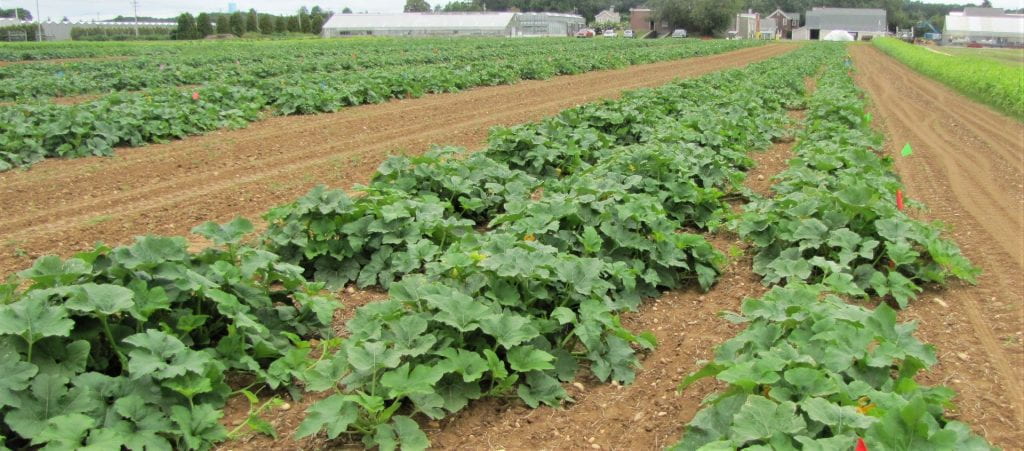
The following plot photos were taken on 10 September.


